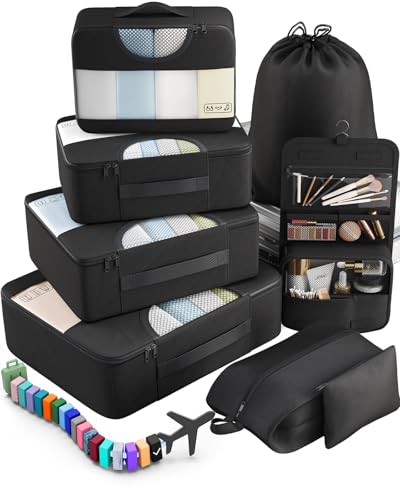In Sarajevo, they use Type C and F power plugs and outlets. The voltage is 230V, and the frequency is 50Hz.
So, you’ll need a travel adapter in Sarajevo. Their plugs and outlets are different from the Type A and B ones we use back in the States.
Quick Overview of the Plugs in Sarajevo:
- Plug type in Sarajevo: C and F
- Standard voltage: 230V
- Frequency: 50Hz
- Need a travel adapter? Yes, you do need a travel adapter
- Need a voltage converter? Most devices won’t need one — some might
- Recommended plug adapter: One Beat International Power Adapter
This information is gathered from local electricity agencies, IEC standards, and the experiences of travelers who’ve used these outlets abroad.
The Only Travel Adapter You’ll Need in Sarajevo
Imagine landing in Sarajevo, ready to charge your phone, and—bam—your plug doesn’t fit. Now what? We don’t sell travel adapters, but we’ve tested and researched the best one for Sarajevo, based on voltage, safety, and reliability. No stress, no dead battery—just plug in and go. Here’s our top pick:
Recommended Travel Plug Adapter
by 6,500+ travelers on Amazon
If you’ve already left and forgot your power adapter, don’t worry. Airports and shops in most countries carry basic adapters. That said, it’s always easier to bring a reliable one from home so you’re not stuck buying whatever happens to be available.
Sarajevo travelers frequently continue their journey through Croatia, Serbia, or Montenegro. Always check outlet types in advance.
Power Outlets in Sarajevo
In Sarajevo, they use Type C and F power plugs and outlets.
Type C

Type C outlets have two round prongs and no grounding pin. Type E and F plugs usually fit too, but grounded plugs will need an adapter.
Type F

Type F outlets have two round prongs and grounding clips on the sides. Type C and E plugs will also fit.
Do You Need a Voltage Converter?
If you’re traveling to Sarajevo, you’ll probably need a voltage converter. The U.S. uses 120V, but the voltage in Sarajevo is different, meaning your electronics won’t work safely without one.
Always make sure to check the input voltage label on your device before using it overseas. If it states “100-240V, 50/60 Hz”, your device supports multiple power systems and won’t need a converter. Most phones, laptops, tablets, and personal care electronics fall into this category.

Which Travel Devices May Need a Converter?
Want peace of mind while traveling? These top-rated voltage converters are a safe bet.
| Device | Need Converter? | Notes |
|---|---|---|
| Phone | ❌ No (usually) | Most modern phone chargers are dual voltage (100–240V) |
| Laptop | ❌ No (usually) | Check the power brick label for 100–240V |
| Hairdryer | ✅ Yes (often) | High wattage; many models are not dual voltage |
| Electric toothbrush | ⚠️ Check voltage | Some models are 110V only |
| Camera / DSLR | ❌ No (usually) | Most chargers are dual voltage |
| Power bank | ❌ No | Charges via USB, adapter is enough |
| Electric shaver / trimmer | ⚠️ Check voltage | Older or cheaper models may not support 230V |
| Tablet / iPad | ❌ No | All models are dual voltage |
| Portable fan | ✅ Yes (sometimes) | Many models are not compatible with 230V |
| Game console | ⚠️ Check voltage | Newer consoles like PS5 and Xbox are often dual voltage — check to be sure |
| Bluetooth speaker | ❌ No (usually) | Charges via USB |
| E-reader (Kindle, etc.) | ❌ No | USB charging only, no converter needed |
Top Travel Essentials to Pack
Beyond adapters, there are a few other smart additions that make travel easier. Here are some essentials worth packing.
Digital Luggage Scale
Packing Cubes
Power Bank
More About Sarajevo
Sarajevo is where East meets West—once called the “Jerusalem of the Balkans” for its tight-knit mix of mosques, Orthodox churches, Catholic cathedrals, and synagogues in a few city blocks. It even had Europe’s first electric tram way back in 1885—way ahead of its time. Today, strolling through Baščaršija (the old Turkish bazaar), you’ll feel that Ottoman vibe with kebabs, burek, and local craft stalls around every corner.
This city’s seen it all—once second in the Balkans after Istanbul, then the longest siege in modern warfare during the 1990s, now reinvented as a vibrant cultural hub. Sit in a kafana with a cup of Bosnian coffee—strong, dark, and served the traditional way—and just watch life roll by. It’s soulful and alive in a way that sticks with you.
Must-dos? Hit the City Hall site where Archduke Ferdinand was assassinated—triggering World War I. Then visit the Tunnel of Hope built during the siege, check out the artsy museums and coffee cafés, and take a ride up to a mountaintop restaurant for sweeping city views. Sarajevo’s a powerhouse mash-up of culture, history, grit—and a whole lot of heart.
Sarajevo uses the same plugs and outlets as the rest of Bosnia and Herzegovina.




